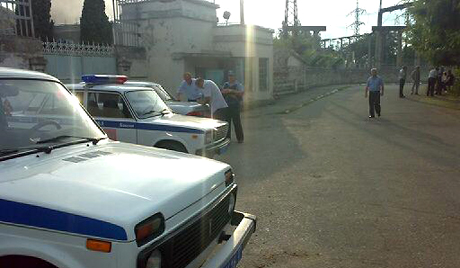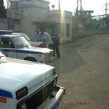
Kabardino-Balkaria’s Rebels Survive Heavy Losses to Return as Insurgent Force
Publication: Eurasia Daily Monitor Volume: 9 Issue: 108
By:

Kabardino-Balkaria is likely to face the worst case scenario in the security sphere this summer and fall. The republic’s jamaat seems to have finished regrouping, having recovered following its deep crisis of 2011, when it lost practically all of its top and middle-ranking leadership. After the death of Emir Abdullah (aka Asker Jappuev) along with his close associates on April 29, 2011, (https://kabardino-balkaria.kavkaz-uzel.ru/articles/184579/) and the killings of the jamaat’s middle level commanders that ensued, the situation in the republic could have developed in two possible ways. The demise of the Kabardino-Balkarian jamaat could have proceeded along the lines of what happened in neighboring Karachaevo-Cherkessia, where the surviving jamaat members barely function in small groups, trying to withstand an extremely high level of repression. The other possibility was the jamaat regrouping and resuming its activities. Recent events indicate that the Kabardino-Balkarian jamaat was probably able to overcome its difficulties. Even the death of yet another leader of that group – Emir Ubaida (aka Alim Zankishiev) was killed on March 27 – did not put a halt to the jamaat’s revival (www.rosbalt.ru/federal/2012/03/28/962737.html).
The republican authorities decreed the establishment of a police force, numbering 622 servicemen, to provide safety and security at the resort facilities of Kabardino-Balkaria during the summer season (https://www.regnum.ru/news/kavkaz/kab-balk/1536837.html#ixzz1wiBiEUbI). Apart from police officers, the authorities resolved to summon volunteers and Cossacks to patrol the resort areas. The patrol police outposts will also be relocated as close as possible to the tourist sites. According to the head of the Kabardino-Balkarian Interior Ministry, Aslan Maksidov, 68 hotels, including 52 private ones, will be open for tourists, along with 61 resorts, mountain camps and mansions. In addition, 23 summer camps for children are expected to receive visitors. Overall, 50,000 tourists are predicted to take advantage of tourist facilities in Kabardino-Balkaria (www.regnum.ru/news/kavkaz/1536837.html#ixzz1wf4UZTa9).
The hallmark of the tactics of the Kabardino-Balkarian rebels is that their attacks take place in broad daylight. For example, on the morning of May 28, unidentified assailants fired shots at the car of Baksan district head Khasan Sizhazhev in the village of Krem-Konstantinovskoe. The official was hospitalized with a stomach wound (RIA Novosti, May 28). The attackers were in a white car that left the scene of the attack in a leisurely manner.
On June 1, unidentified attackers in Nalchik killed an investigator from the Russian Investigative Committee’s branch in Kabardino-Balkaria. The body of the investigator, later identified as Alim Vorokov, was found in a car near Kabardino-Balkaria’s agricultural academy (Interfax, June 1). The Investigative Committee did not rule out the possibility that Vorokov’s murder was connected to his professional activities (https://kabardino-balkaria.kavkaz-uzel.ru/articles/207512/). His killers apparently stole his handgun with 12 cartridges. That was not the only loss for Kabardino-Balkarian law enforcement on June 1: that same day, unidentified attackers killed a 27-year-old patrol police officer, Lieutenant Boris Mashukov. The incident took place around noon on Tarchokov Street. According to local eyewitnesses, Mashukov was attacked in his car from a passing car. The officer died on the spot (www.rg.ru/2012/06/01/reg-skfo/mashuk-anons.html).
The series of setbacks for the Kabardino-Balkarian police continued on June 2, when an investigator from Chechnya was attacked in his car at the administrative border between Stavropol region and Kabardino-Balkaria. The officer was hospitalized with serious injuries. “Unidentified people fired shots at a Ford automobile with an employee of the Chechen branch of the Russian Investigative Committee in it,” an official source in the police was quoted as saying (www.gazeta.ru, June 2). The very fact that the incident took place near the Tambukan police checkpoint on the Kavkaz federal highway indicates that Kabardino-Balkarian militants are active not only in the capital and its suburbs, but across the republic. This points to the existence of more than a single mobile rebel group. The republican jamaat apparently has managed to retain its network in the districts of Kabardino-Balkaria.
The situation remains tense in the republic, with kidnappings of suspected rebels or of those who sympathize with the rebels still taking place. The police do not have sufficient capacity to react to all rebel actions, so law enforcement tries to put pressure on jamaat members through threats and the kidnapping of their relatives. On May 31, a resident of the republic, Zalina Khekilaeva, filed an appeal to the Russian Investigative Committee about the death of her husband. Albert Karmov’s body was found in an area near Nalchik called Sady Nalchika (Gardens of Nalchik) (www.regnum.ru/news/kavkaz/kab-balk/1537531.html), and he was declared a suspected member of the illegal armed resistance. Khekilaeva reported that Karmov was kidnapped in front of her by armed men and that all her attempts to get the police to launch an investigation into the case were unsuccessful until the very moment he was found with a fatal injury to his upper body, apparently caused by an explosion (https://kabardino-balkaria.kavkaz-uzel.ru/articles/207530/). This type of incidents has become routine in the region, with police targeting people who might sympathize with the rebels by identifying them by their clothes, the number of prayers they perform in the mosques they attend and through tracking them on the Internet. That is why yet another report, about the killing of a militant and the wounding of two of his companions near the city of Baksan on June 3 (Interfax, June 3), is of questionable reliability. Even accidental police fire may be reported as some kind of operation against suspected rebels.
Thus, it can be concluded that the republican authorities and Russian security services have failed to completely rout the rebels during their period of relative weakness, when they were forced underground. Having overcome temporary obstacles, members of the armed resistance of Kabardino-Balkaria appear to have finished their regrouping and are now preparing to launch attacks to prove their viability. To do so, the insurgents will have to strike targets across the republic, especially singling out those officials who wage war against the insurgency alongside the police.




